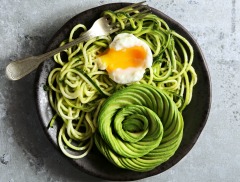Don't just meal plan... meal plan intelligently - with Meal Genius! Sign up for our free newsletter to get delicious recipes, sample meal plans and a whole lot more!
Spices, Bay Leaves
Bay leaves come from the sweet bay or laurel tree, known botanically as Laurus nobilis.
The elliptical leaves of both trees are green, glossy, and grow up to 3 inches long. Bay leaves are grown in the Mediterranean region and are a staple in American kitchens. The leaves also flavor classic French dishes such as bouillabaise and bouillon.
Bay leaves are pungent and have a sharp, bitter taste.
The Benefits
- Special diets: Autoimmune Paleo Diet, Candida Diet, Diabetic, Elimination Diet, Gluten-Free Diet, Gluten-Free/Dairy-Free Diet, Grain-Free Diet, Low Acid Diet, Low Carb Diet, Low FODMAP Diet, Low Histamine Diet, Low Oxalate Diet, Low Starch Diet, Paleo Diet (Light), Paleo Diet (Strict), PCOS Diet, Pescetarian Diet, Primal Diet, Thyroid Diet, Vegetarian Diet, Whole Food
- Excellent Source of:
- Good Source of:
- Preferences: No Fish, No Red Meat, No Pork, No Eggs, No Shellfish, No Gluten, No Nuts, No Seeds, No Soy, No Dairy, No Poultry, No Molds, No Citrus, No Pseudograins, No Coconut, No Nightshade, No Legumes, No Corn, No Yeast, No Peanuts, No Grains, Low Carbohydrate, Low Cholesterol, Low Fat, Low Sodium, Low Sugars, Low Saturated Fat
Related Foods
Selecting and Storing
Store dried bay leaves in a cool, dark, dry place. If choosing fresh bay leave, select those with good color and a clean, fresh scent and avoid any brown spots or wilted leaves. To keep fresh, refrigerate in a plastic bag filled with air and securely closed. Store in the vegetable crisper section of the refrigerator.









